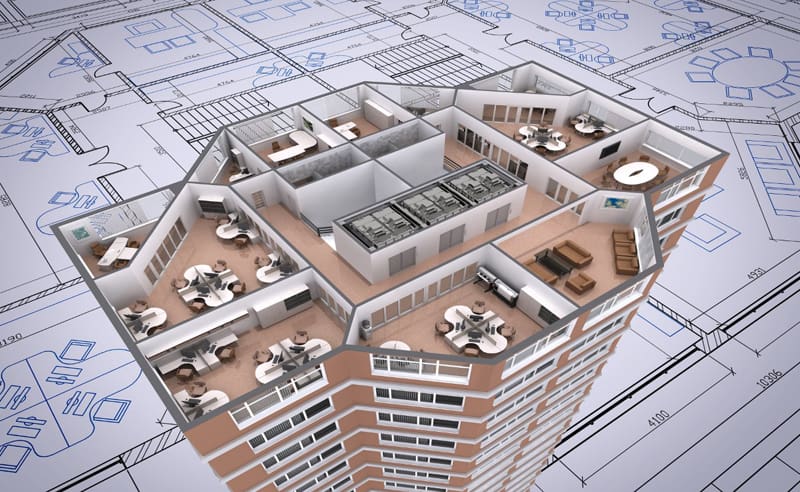Wondering how BIM modeling can support architects while designing large-scale construction solutions? Find all the benefits of this advanced technology in the article.
Here, we won’t start with the definition of BIM modeling as the term interpretation can be easily found on Wikipedia. We will look closely at the ways such architecture tool as BIM is implemented in construction and design and what benefits it delivers to architects.
Need advice on how to save budget on your current construction project? A great solution is to contact engineering companies at B2B marketplaces. For example, architects can receive a powerful expert consultation as well as find BIM solutions at Enre.co which is one of the most reputable B2B engineering marketplaces.

BIM during Design and Construction
BIM modeling is acknowledged as a super-efficient tool while developing big architectural solutions. Let’s look at how the 4-step construction process with BIM works:
- Stage 1: Preparing a 3D-Based Model.
Architectural professionals implement BIM tools to generate detailed 3D models of a certain structure. At the initial phase, architects have the opportunity to experiment with the design and discover challenges that can occur before delivering their ideas to the building process.
- Stage 2: Workflow.
All data and ideas that refer to the solution are kept in a shared place that architects, customers, contractors, and other workflow participants possess access to. As a rule, this is a cloud-based tool and all the participants with secure permissions can tap into it from everywhere by simply connecting to the server. Architects can store in the BIM system the following:
-
- Parametric modeling, spatial planning, energy/light estimations, material selections, cost evaluations, and construction time analysis;
- Implementing these models and assessments, architectural specialists are able to layout the most optimal building workflow for the solution
- Stage 3: Building.
Taking into account the fixed workflow, engineering contractors in close collaboration with the architecture company construct a certain edifice. At this step, architects can get back to the BIM model of this edifice during the building process anytime to introduce corrections/optimizations to it as required. One of the pluses of BIM is that it lets everyone be on the same page during the building process, even if the workflow undergoes modifications.
- Stage 4: Handover.
After the solution is built, architects can pass the BIM model to the customer as well as to the facility management firm. For the last, this model will come in handy while placing HVAC systems and planning future renovations.
The Top Benefits of BIM
To get the idea of how the benefits of BIM can optimize big construction projects, let’s consider several advantages of BIM below:
- Economizing Resource and Budget.
A significant plus of BIM is that it delivers reliable building price assessments long before the construction stage starts. Implementing tools like BIM 360 Docs, architectural specialists evaluate costs connected with materials (their supply), labor (involving timelines based on construction payrolls), and shipping modular/prefabricated components.
The above-mentioned not only provides architects with a better understanding of the price of the future solution, but that also supports them in identifying methods to minimize costs. For instance, they can:
-
- Select more cost-efficient construction materials;
- Figure out the perfect time (especially during various promos) to purchase building constituents at their lowest market price;
- Choose what is less expensive: to design on-site or prefabricate.
- Optimized Communications.
BIM optimizes collaboration within architects, customers, contractors, and other relevant participants engaged in a certain construction solution. Such a partnership is possible as when using BIM, all of the necessary data (involving assessments, models, and development sketches) are shared and preserved from one location. Everyone that works on the solution can see that.
Engineering contractors get access to the BIM tool momentarily as needed. So, they can build the edifice proceeding from the most current workflow and strategies. This reduces project-related conflicts among the project participants. It is simpler to visualize issues before construction starts, so engineers don’t spend time thinking over potential solutions on-site.
BIM applies communication platforms to make a building process more secure. BIM enables architectural specialists to forecast possible construction risks and to interfere with them by modifying the design.
- Better Prefabrication/Modular Construction.
The BIM tool is perfect for generating detailed manufacture models that can then get prefabricated off-site. Architects receive more chances to develop modular elements of architecture that ideally correspond to one another and contain complicated tolerance calculations. As a result, architects economize budget and time because engineers spend less time designing the elements on-site from the ground up.
- More Qualitative Results.
Though the benefits of BIM are obvious mostly in the development and building process, customers can also witness optimizations in construction quality. Implementation of BIM makes models and calculations more detailed. This results in a higher quality structure.
As far as the BIM process involves several visualization instruments, the solution may look more aesthetical. Architects can view what the edifice will look like on the final construction stage and the ways artificial/natural light will act within the edifice.
